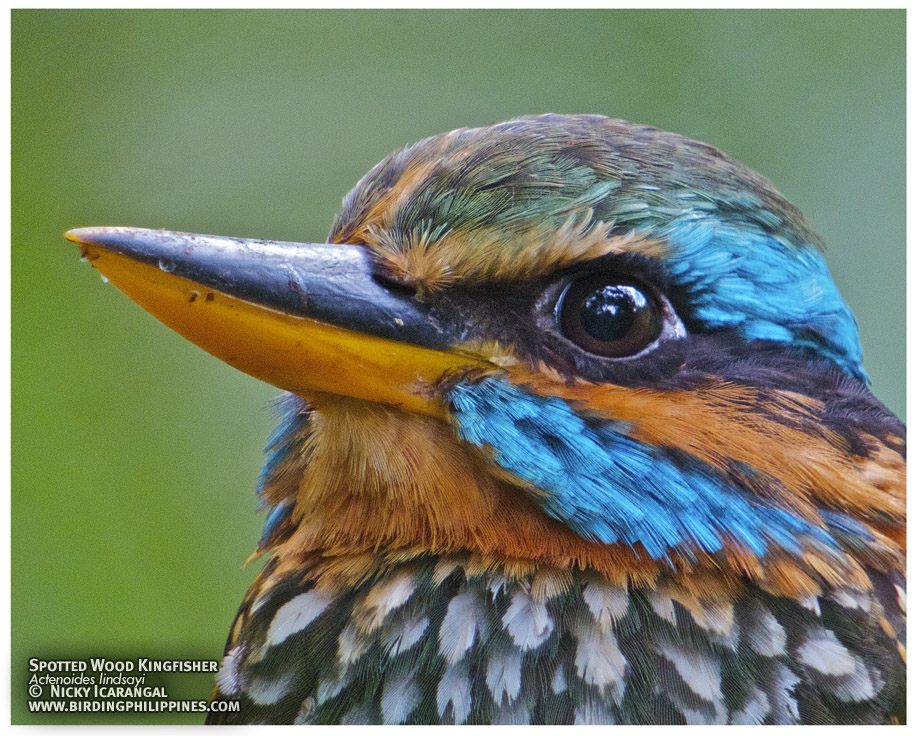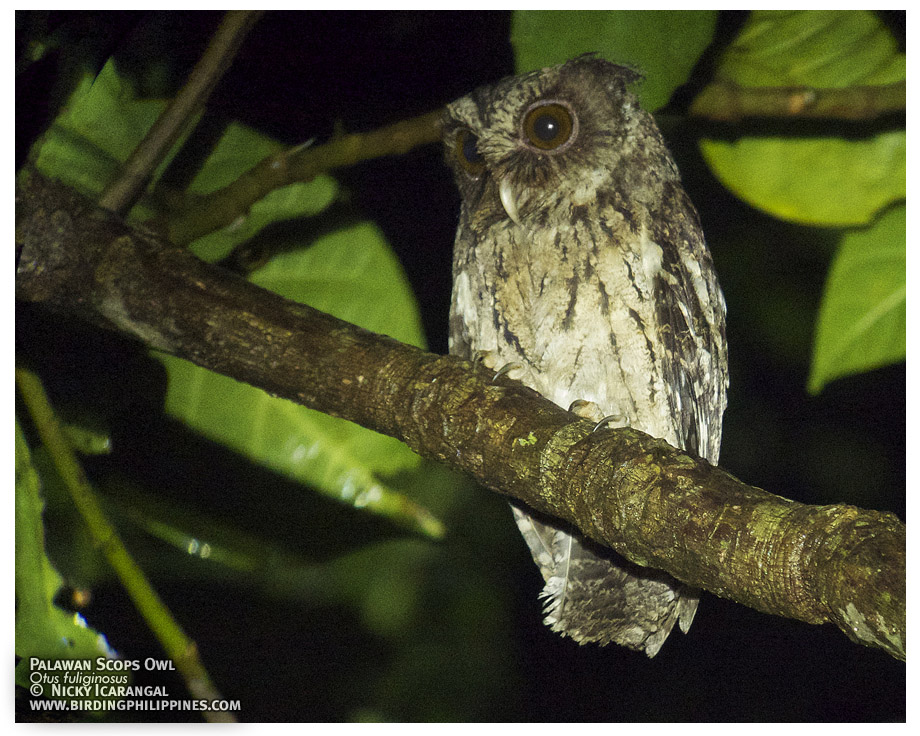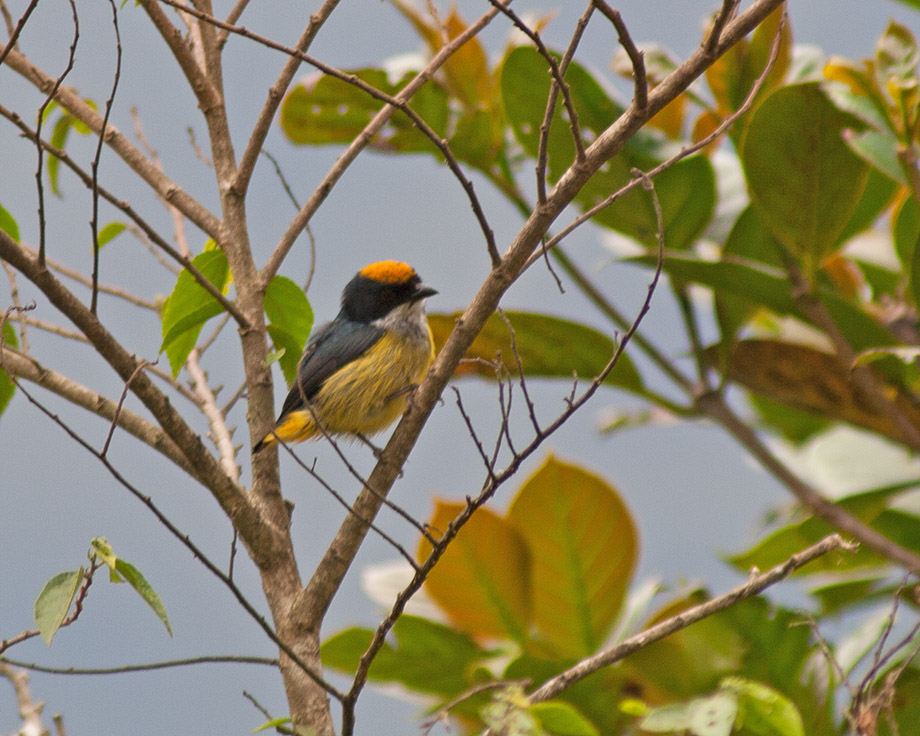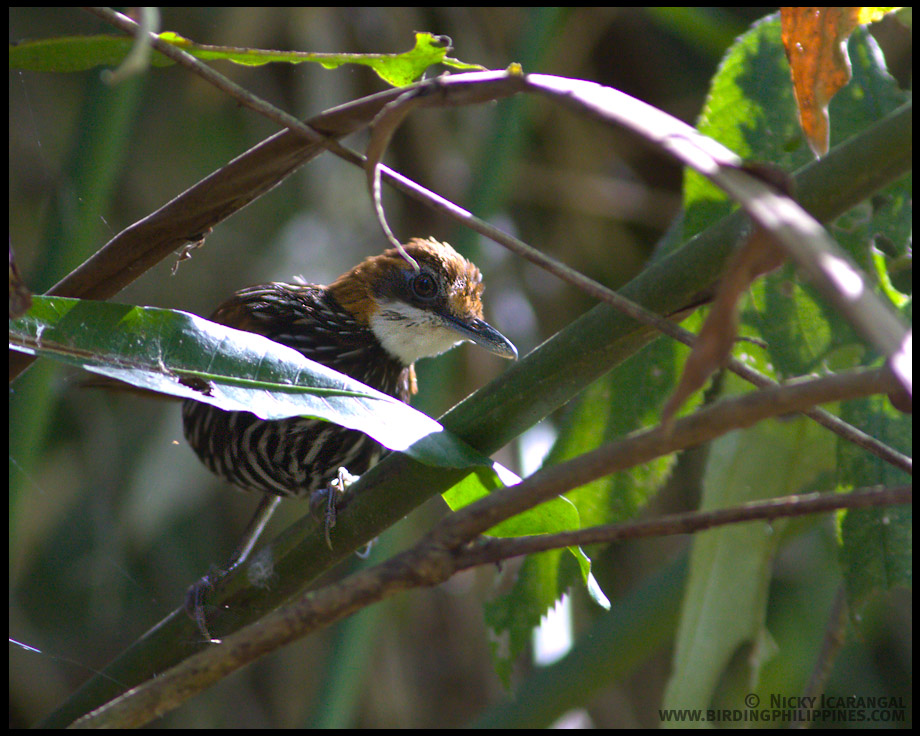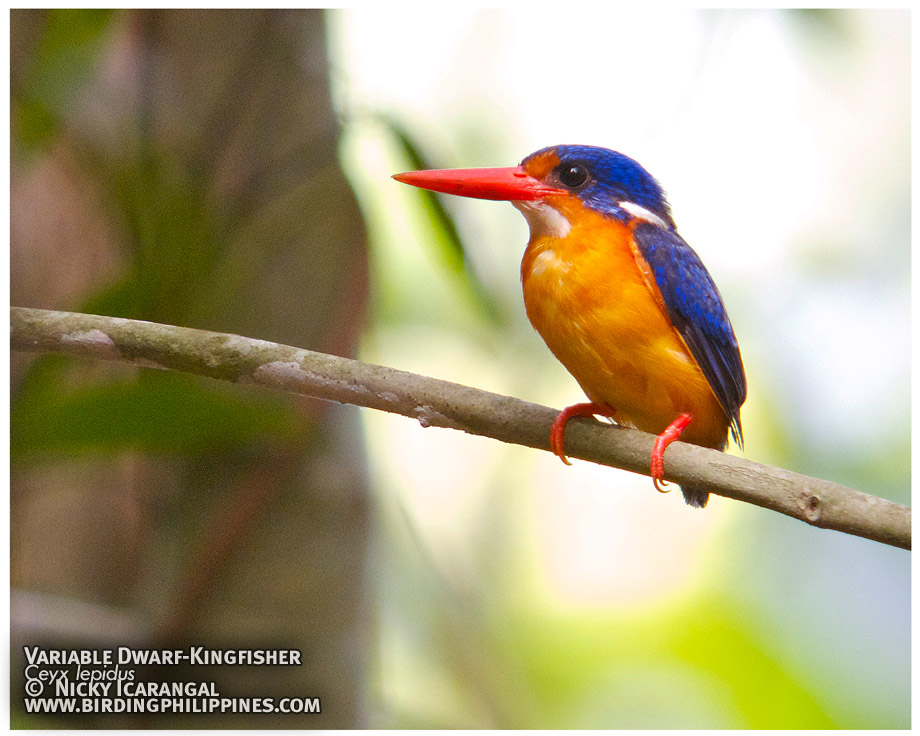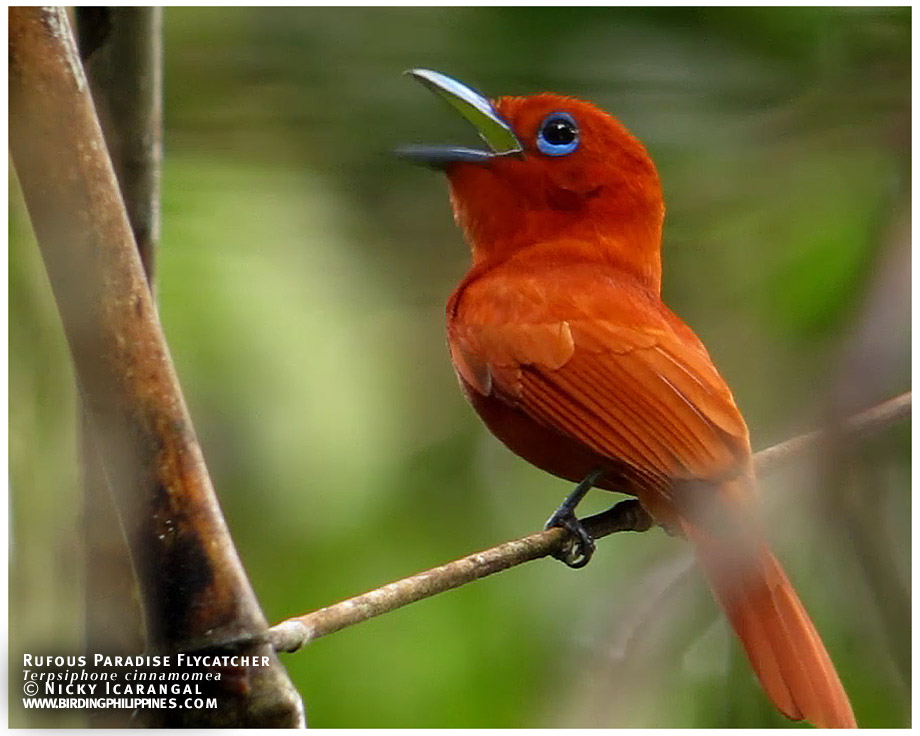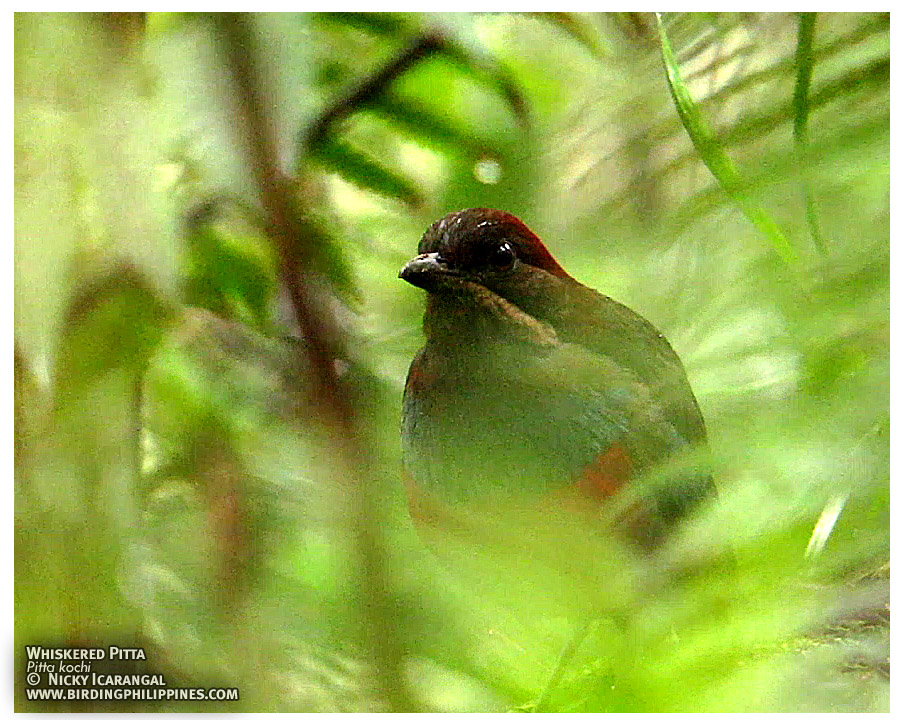Spotted Wood-Kingfisher
This is one of the most colorful endemic kingfishers in the Philippines, Spotted Wood Kingfisher, Actenoides lindsayi. It is endemic to Luzon and Negros and Panay, with the Luzon race, both male and female featured at the start of the video while the moseleyi from Negros at 4:20. It is sexually dimorphic, meaning the male looks different from the female. The male featured at around 0:15 to 3:05 has a turquoise blue eyebrow and malar stripe while the female (at around 3:07) has green eyebrows and malar stripe. The moseleyi race from Negros and Panay differs from the the Luzon race by having black margins of feathers on the back and wings.
The Spotted Wood Kingfisher is strictly a forest kingfisher and feeds on insects, other invertebrates as well as small vertebrates. It is very active pre-dawn, giving its loud ringing whistles and trills.
The best place to look for this kingfisher will be Mt. Makiling in Luzon and Mt. Kanlaon or Twin Lakes in Negros Island.
Spotted Wood Kingfisher, Actenoides lindsayi
Mt. Makiling, Laguna, Luzon and CENTROP, Silliman University, Dumaguete, Negros

